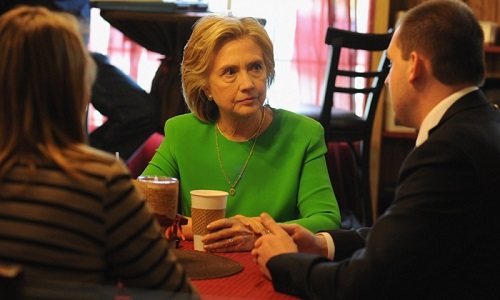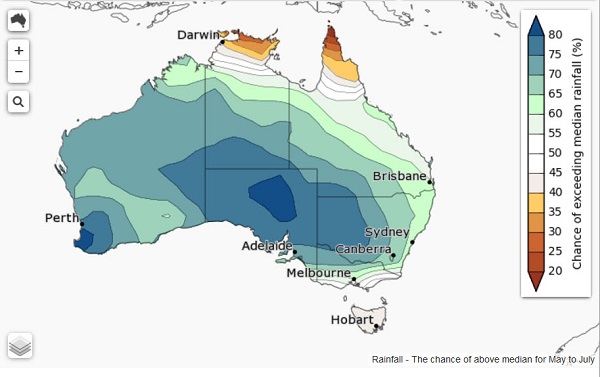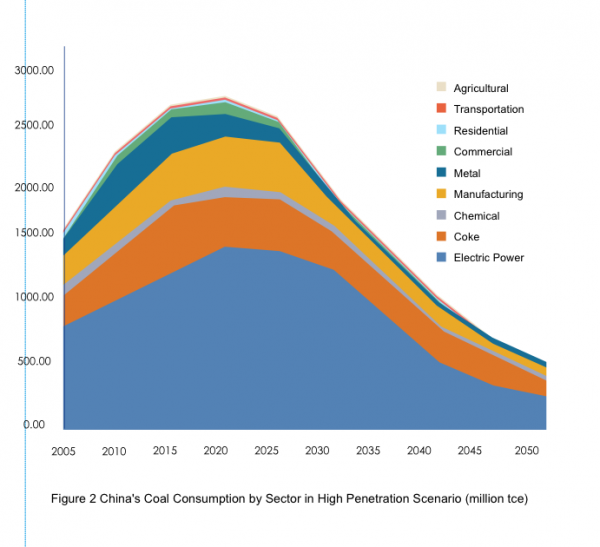1. Will Hillary Clinton be too weak on climate change?

Campaign chair John Podesta tweeted:
Helping working families succeed, building small businesses, tackling climate change & clean energy. Top of the agenda.
Yet she herself has mentioned it only obliquely since announcing that she’s running. From the past we have this:
At the National Clean Energy Summit in September of last year, in her first major domestic policy address since stepping down from the state department, Clinton described global warming as “the most consequential, urgent, sweeping collection of challenges we face as a nation and a world”.
“The science of climate change is unforgiving,” Clinton told the League of Conservation Voters three months later. “No matter what the deniers may say, sea levels are rising, ice caps are melting, storms, droughts and wildfires are wreaking havoc.”
We’ll have to wait and see. She seems to be in listening mode at present.
2. It’s time to ‘Do the math’ again
David Spratt, in a new report Recount: It’s time to ‘Do the math’ again, surveys the scientific literature and concludes that
two key propositions — the existence of a sizeable carbon budget for 2°C of warming, and emphasis on the 2°C goal — are incorrect.
Moreover, he sees that:
In reality, 2°C is the boundary between dangerous and very dangerous climate change and 1°C warmer than human civilisation has ever experienced.
Dangerous climate change is already occurring:
Big tipping-point events irreversible on human time scales such as in West Antarctica and large-scale positive feedbacks are already occurring at less than 1°C of warming.
In the lead up to the forthcoming Paris talks, policy makers through their wilful neglect of the evidence are in effect normalising a 2.5–3°C global warming target.
See also The folly of two degrees.
3. Effect of carbon dioxide on the Antarctic ocean floor
On another thread BilB linked to a stunning video of Americans diving under the ice:
Our mob have been diving also, to study changes on the ocean floor.
The Southern Ocean alone is absorbing 40 per cent of the world’s ocean uptake of carbon dioxide and is acidifying at twice the rate of tropical waters. They are concerned about the effects on krill and the stability of the food chain.
May to July is likely to be wetter than normal over most of Australia, except for the tropical north and Tasmania.
The dominating influence is warmer water in the Indian Ocean and much of the Australian coast. However there is a countering influence in the north and northeast from a probable El Niño. Here’s how it looks:

6. Stanford aluminium-ion battery
I think I’ve posted on this one before. The linked article gives a summary of the advantages and the one disadvantage – low voltage.
I’d wondered about cost. It says:
Aluminum is abundant and costs less than lithium. That could drive down the cost of batteries and that would be another factor working in favor of electric cars going mainstream sooner rather than later.
Elsewhere we are told:
By the end of 2014, more than 700,000 total plug-in vehicles had been sold worldwide (plug-in hybrids and pure battery electrics), up from about 400,000 at the end of 2013. As of 2015, dozens of models of electric cars and vans are available for purchase, mostly in Europe, the United States, Japan, and China.
A key factor is that batteries are getting cheaper.
7. Fossil fuels to be stranded by economics, innovation and climate
HSBC says fossil fuel companies, or some of their assets, will become “non-viable” or “unburnable”. That’s not just because of climate action, it is also due to changing economics and the impact of new technologies, such as solar and storage.
Fossil fuel companies face an increasingly “acute” risk of becoming “stranded assets”, as a result of climate change policies, changing economics such as plunging commodity prices, and the impact of new technologies such as solar and storage.
That’s the assessment of global investment bank HSBC in a new report titled “Stranded Assets, what next?”
8. Network gold-plating confirmed – Senate report
The Senate report on electricity pricing has confirmed network gold-plating as the significant factor in electricity pricing, but has been branded as “gutless” by the Greens for a failure to make any sensible recommendations. So we’ll continue to have high prices and people will vote with their feet by installing rooftop solar.
9. Australia can achieve 100% renewables by 2050
Australia can achieve 100% renewables and net zero emissions by 2050 while growing the economy, according to an ANU report commissioned by WWF.
Costs of renewables are falling:
By way of example, the report notes that large-scale solar plants are already only half the cost that the Treasury’s 2008 and 2011 modelling studies estimated they would be in the year 2030.
10. China may break reliance on coal
China consumes nearly as much coal as every other country in the world combined. That could change, according to a new study.
The study, by the China National Renewable Energy Centre and a variety of other Chinese organizations with support from the U.S. Department of Energy, shows China can do a lot more than that.
It’s both technologically and economically feasible for China to rely on renewables for more than 60 percent of its total energy needs, including transportation, by 2050, the study says. On the way there, China has the ability to reach the peak of both its fossil fuel consumption and carbon dioxide emissions by 2025. China in 2050 could get more than 85 percent of its total electricity from renewables, 64 percent of of which could be from wind and solar power. Under that scenario, only 7 percent of its power would come from coal after having developed more than 200 gigawatts of electric power storage.
Republished at RenewEconomy. See also at Climate Progress.
Coal could peak by 2025:



Brian,
Thanks for the grid gold plating item. It completely confirms what I have been labouring to highlight for some years now. The next realisation though is that inaction jeopardises the creation of grid scale zero emissions technologies. Example: BNC havd been arguing for years for nuclear energy in Australia and their main argument is cheap continuous energy. The cheap part has bedn shot in the foot by Areva’s problems with the 3 reactors they are building which are now at 9 billion dollars each and Areva is requiring a government bail out. But even if they were able to achieve electricity at 2 cents per unit, it would make little or no difference to the retail price due to the rorting, which is of a degree worthy of Russian Oligarchs, of the upstream components.
The only positive aspect of this is that it creates great incentive to install rooftop solar, but ths is an extremely inefficient way to decarbonise the economy. I doubt that government can do anything to disassemble the mess that has been created. The NSW government is in the process of removing any influence it might have had in selling off its energy assets. The rorters have had a tastd of great wealth and are totally unlikely to give it up “in the national interest”. They know that the nation can afford to pay, and so they shall continue to do so.
A royal commission into how the gold plating decisions were made would be interesting.
Indeed it would be, JohnD.